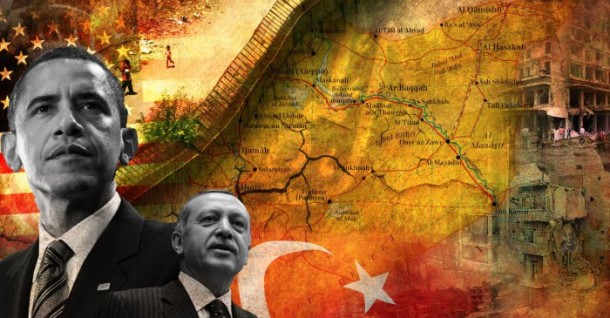A fair amount has already been said and written about the “phenomenon of ISIS”, but is the emergence and rise of this organization really a phenomenon? Are there not similar precedents in history? The activity of this sectarian group is hardly ever considered from this point of view, even though a simple and superficial investigation uncovers analogies without much difficulty at all.
The term “sectarian” is not being used accidentally here, for no matter how the members of this group see themselves, no matter what they call themselves, the majority of Muslim scholars consider ISIS to be just that – a sect, and what’s more, a “takfiri” sect.
…Here we should explain a bit about the concept of “takfirism”. This term is formed from the word “takfir”, which means “accusation of unbelief”. According to Islamic doctrine, such an accusation can be made only on the basis of iron-clad proofs, and only by figures who are competent in dealing with doctrinal questions. When one or another group starts throwing around “accusations of heresy” to the left and right, and often for the most trivial reasons, and without possessing the requisite level of knowledge, then this group is already on the road to “takfirism”, and thus, sectarianism, as it considers itself to be the only “chosen and true” Muslims, while all the rest are accused of a whole range of sins.
But when did “takfirism” appear among Muslims? Here we must explain, once again, that according to most Muslim scholars “takfirism” is a continuation of and a new type of “Kharijism”. If we keep this in mind, then everything falls into place, as the history of the Kharijite sects is well researched, and it is these sects that provide us with an analogy for the modern “neo-Kharijite, takfirite” group of ISIS. Both of them adhere to practically identical ideologies, as anyone who looks even cursorily at the views and thoughts of the Kharijite preachers will soon come to believe.
***
Even though the Kharijite movement started in Iraq, later on it spread to other territories too, including to distant provinces of the Muslim state. And while the predecessors of ISIS did not manage to create a state in Iraq, they were more successful on the periphery. The Kharijites of North Africa were particularly fortunate: it was here that they set up states that lasted for almost one and a half centuries.
One such state was that of the Rustamids, which was founded in 767 and dissolved in 909. The Rustamid capital was the city of Tahert (present-day Tiaret), in the north west of Algeria. Straightaway the “Rustamid Kharijites” encountered the problem of the transmission of power. To begin with they declared the principle of “free election of the ruler”, but then once they had consolidated power in their hands, the Rustamid dynasty did not want to relinquish it, so that they ended up by introducing the de facto hereditary form of succession, against which they had been so fiercely opposed.
This led to the beginning of internecine conflicts around the throne. Nonetheless, the Rustamids survived until the start of the 10th century when they were crushed by the Fatimids. And even though the “Rustamid state” was not very large, one could hardly call it small either. What’s more, the ruling dynasty was able to use its important strategic position (situated on significant trade routes), as well as to play on opposition between the Abbasids and the Spanish Umayyads. This was one of the main reasons for the lengthy existence of this state.
***
One of the Rustamids’ neighbors was the state of the Midrarids, which began in 772 and ended in 967. The capital of this dynasty was the city of Sijilmasa in the south east of Morocco.
It is interesting that the Midrarids were also a part of the Kharijite movement, but despite this did not look to the Rustamids as their closest allies, even though to begin with a dynastic marriage took place between the two ruling families. But the first descendant of this marriage who received power was toppled by his own brother. This clearly shows that when money and power are at stake, beautiful slogans about “fraternity and equality” are quickly forgotten.
The Midrarids were also absorbed by the Fatimids; however, the history of their interaction is extremely interesting. For example, when the founder of the Fatimid dynasty Ubaidullah came to Sijilmasa, to begin with he was able to become a close friend of the ruler. Later on, it is true that when they found out the full truth about Ubaidullah, he was thrown into prison, and this was the reason why the Fatimid forces invaded: the Midrarids suffered a huge defeat and a new vicegerent was installed in Sijilmasa. Later, though, the Kharijites rebelled and seized power again, and then lived for almost 10 years in peace and friendship with the Fatimids. In fact, one of the later rulers of this dynasty actually became the Fatimid vicegerent.
***
So what’s the snag here? The fact is that the Fatimid dynasty was Ismailite, a movement that had split off from the Shiites. For Kharijites they were even worse than the Shiites themselves. Still, as is evident from history, when there are real life problems the ideological doctrines of the Kharijite sects can change so much that they become unrecognizable.
In fact, their modern heirs in the person of the “takfiris” are not very different from their ideological forebears. They also accuse all who disagree with them of the most terrible sins, but they only need to, as they say, get a feeling for the real situation, for them to ditch their recently proclaimed slogans, just as if they had never existed. And the leaders of ISIS provide a graphic confirmation of this: for example, while proclaiming their “defense of the purity of Islam” they have not had the least qualms about forming an alliance with members of the Baathist movement, whose ideological platform, as is well known, is certainly not religious. Of course, this is explained as a “cunning tactical move”, but then what are all these beautiful slogans for?!
***
The history of the Rustamid and Midrarid states shows, on the one hand, that when they come to power any movements and tendencies, including the Kharijites, usually change their initial principles and slogans, no matter how attractive they may be.
On the other hand, the history of the Kharijite states shows that the modern “neo-Kharijites” are far from being a unique type and are certainly not a phenomenon. (The difference is only that the world has become global and open, and furthermore that new modern technologies have appeared which have expanded and intensified our capacities).
Reality is such that, as a matter of fact, starting as far back as the 8th century, the ideological forebears of “ISIS” and similar groups were already trying to create their own states. Sometimes they succeeded, but in the majority of cases these attempts were doomed to failure. When they did in fact manage it, they soon came face to face with the humdrum realities of everyday life. And then it was only a matter of several generations before the majority of the subjects of these Kharijite states began to reject many of their previous beliefs.
This is exactly what happened to the Omani “ibadis” (one of the Kharijite movements). Today one can hardly consider the inhabitants of Oman to be the heirs of the ideas of the Kharijites: their ideology is completely different from that of their forebears.
***
The real heirs of this most dangerous and harmful sect (in the words of Muslim scholars) in the modern era is without a doubt those groups and movements which practice radical “takfirism”, and who do not accept any different way of thinking and commit terrorist assaults and attacks on all and sundry, including through the use of suicide bombers.
Still, one cannot help noticing that the pretense of “fighting for the right” usually conceals a refusal to accept any power over oneself, that is, in essence, it is a question of banal anarchism. And this means that the “Kharijites” and their ideological successors the “takfirites” as well as radicals in general are, all told, not an “invention” of Islam. This class of people exists in all religions and teachings, as the reasons for the emergence of anarchists involves the same characteristics, namely, stubbornness, intolerance, unwillingness to submit to anyone and exorbitant pride. And if, on top of all this, you add literalism and the lack of an adequate education, then you get an extremely explosive mixture. And such people, as is well-known, can be found in any people and any religion.
Ruslan Raminov, specially for portal
Muslim Politic
![Электронный журнал [Электронный журнал]](/magazine.static/magazine-front.jpg)






